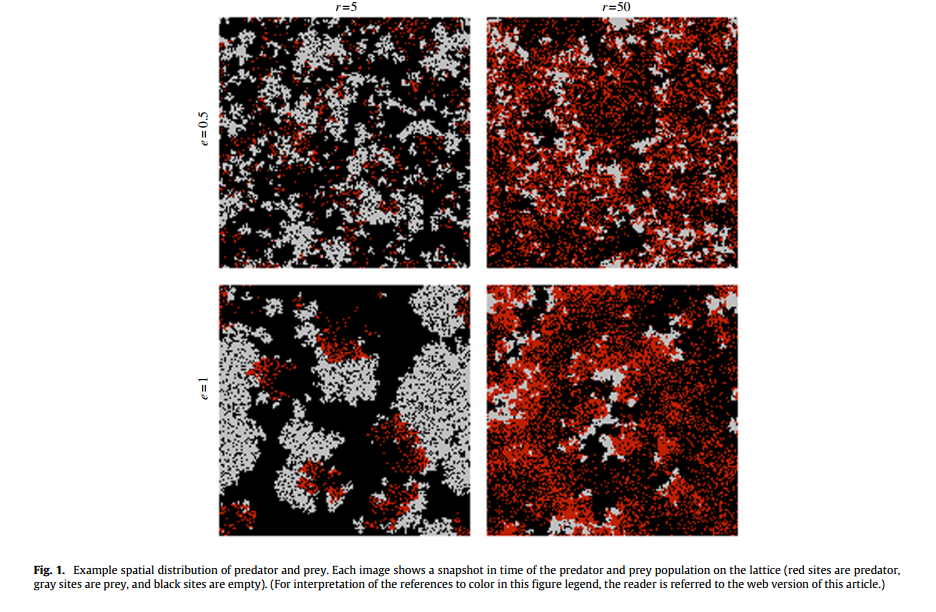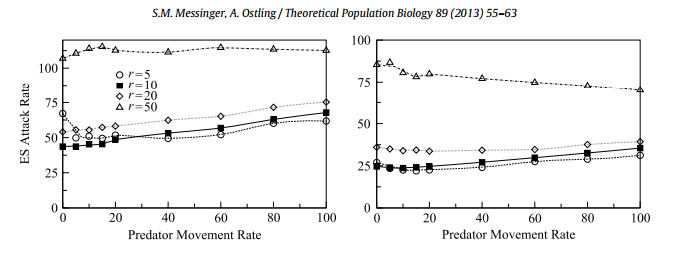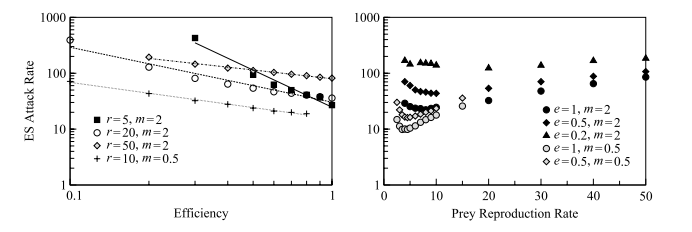Predator attack rate evolution in space: The role of ecology mediated by complex emergent spatial structure and self-shading
http://doi.org/10.1016/j.tpb.2013.08.003
Background:
In predator prey systems, ecologists are interested in understanding mechanisms that drive the evolution of predator attack rates. Traditional models that have sought to provide mechanisms have ignored the importance of spatially structured population models. However, previous work has demonstrated that comparing non-spatial and spatial structured models can often lead to differences in evolutionary outcomes. Initial work in this area has demonstrated that spatial structure can result in variation in predator attack rates, but little is known regarding other mechanisms that can result in attack rate variation within a spatial context. One potential mechanism observed in spatially structured host-pathogen systems is self-shading. In a pathogen-host system self shading can be defined as high localized transmission of the pathogen that leads to the depletion of local susceptible hosts. In this paper, researchers adapt self-shading to a spatially structured Lotka-Volterra model.
Model: A Simple Lotka-Volterra predator-prey model.
- Prey and Predator populations reside on a two-dimensional lattice.
- Lattices can be occupied by predator (P), prey (N), or neither (O).
- Predators and prey are unable to occupy the same site.
- Prey reproduction is determined by the intrinsic growth rate of the prey (r) times the number of empty sites next to it.
- Size of the lattice sets the prey’s carrying capacity.
- Prey not consumed by predators die at rate d.
- Rate of prey consumption by the predator is equal to the attack rate (α) times the number of prey next to it.
- each time a prey is consumed an offspring is produced in the now empty site, reproductive success is governed by probability e.
- Predators die at rate m.
- When allowed, predator movement is determined by the intrinsic rate of movement mp times the number of empty sites near the predator.
Predator death rate, predator efficiency, predator movement, and prey birth-death are shown to all have impacts on the evolutionary outcome when incorporated into a self shading context.
Key Figures:




